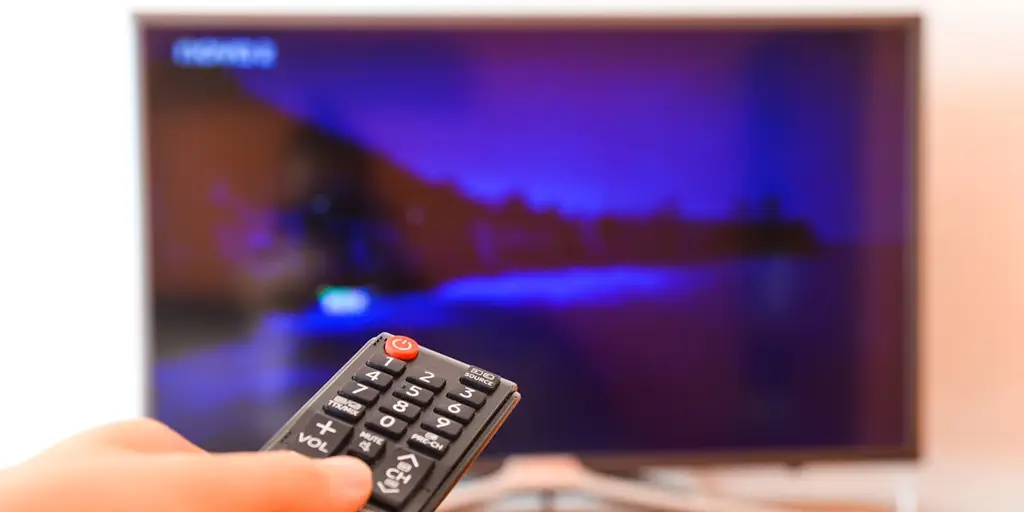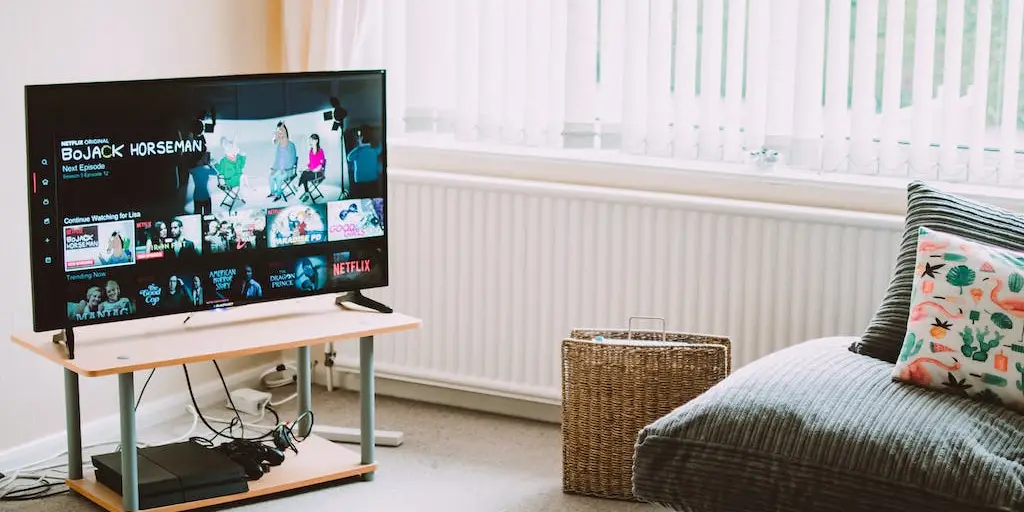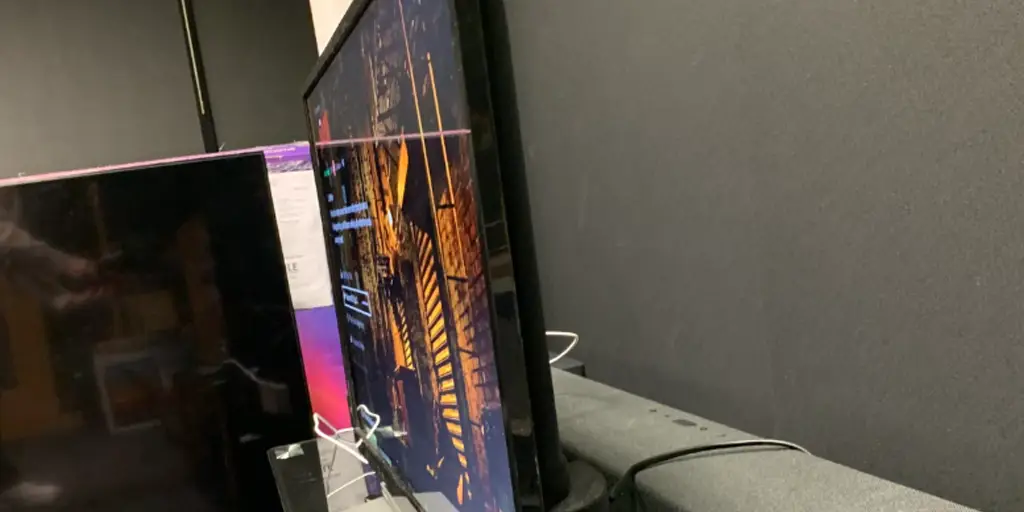When most people think about a 32-inch TV, they often wonder about its actual dimensions.
It’s essential to note that the “32-inch” label typically refers to the diagonal length of the screen, not the TV’s width or height.

A standard 32-inch TV, measured diagonally, will have approximate dimensions of 27.9″ in width and 15.7″ in height. However, these measurements can vary slightly based on the brand, model, and presence or absence of bezels.
Did you know? The reason TVs are measured diagonally is because it provides a consistent method of measurement, considering the various aspect ratios TVs can have, such as 4:3, 16:9, and so on.
| TV Size (Diagonal) | Approximate Width | Approximate Height |
|---|---|---|
| 32 inches | 27.9 inches | 15.7 inches |
However, it’s crucial to remember that the stand or base might add to the TV’s overall height. Plus, if you’re thinking about wall-mounting your 32-inch TV, consider the depth of the TV and any protrusions at the back.
Pro Tip: Always check the manufacturer’s specifications to get the exact dimensions for a specific TV model.
How Does A 32-Inch TV Look Like In A Room?

Have you ever wondered how a 32-inch TV would fit into your living space? The aesthetics and feel of a room can change significantly based on the size and placement of a TV. Here are some factors to consider:
- Room Size: A 32-inch TV is often considered ideal for smaller rooms, like bedrooms or small apartments. In larger spaces, such as expansive living rooms, a 32-inch TV might seem dwarfed, making the viewing experience less immersive.
- Wall Space: If you’re considering wall-mounting your TV, ensure you have adequate wall space. While the TV itself might be around 28 inches wide, you’ll want to account for space on either side to avoid a cramped look.
- Furniture: The type and size of your furniture, like TV stands, cabinets, or wall units, play a significant role in determining how the TV will look. A too-large furniture piece might overshadow a 32-inch TV, while something too small might not be functional.
Visual Aids:
- Illustrations: Consider using images or illustrations showing a 32-inch TV in various room settings. This will give readers a visual cue on what to expect.
- Additional Decor: The placement of other decor items like lamps, photo frames, or plants can enhance or detract from the TV’s presence. It’s always a balance between functionality and aesthetics.
Size Of Your TV According To The Size Of Your Room
Choosing the right size for your TV is not just about the dimensions of the screen but also about the space where you plan to place it.
Here’s a deep dive into understanding the harmony between TV size and room dimensions:
- Viewing Distance: The primary factor to consider is how far you’ll be sitting from the TV. For a 32-inch TV, the optimal viewing distance is typically between 4 to 6.5 feet. Sitting too close might make individual pixels visible, whereas being too far away can diminish the viewing experience.
- Room Dimensions: If your room is long and narrow, you might be seated further away from the TV, making a larger screen more suitable. Conversely, in a compact space, a 32-inch TV might be just perfect.
- Room Purpose: Bedrooms, kitchens, or small home offices might benefit from a 32-inch TV due to the typical room size and viewing distance. Larger living rooms or media rooms might require bigger screens for an optimal viewing experience.
List of Recommended TV Sizes Based on Room Dimensions:
- Small Rooms (Up to 100 sq. ft.): 24-32 inches
- Medium Rooms (100-200 sq. ft.): 32-43 inches
- Large Rooms (200+ sq. ft.): 43 inches and above
- Room Layout: The arrangement of furniture, doors, windows, and other fixtures can influence TV placement. For instance, placing a TV opposite a window might cause reflections during daytime viewing.
The Screen Size to Room Ratio suggests that the screen size (diagonal) should be approximately one-third of the viewing distance for HD TVs.
- Ambient Lighting: The amount and type of lighting can influence the perceived size and clarity of the TV screen. In well-lit rooms, matte screens might be preferable to reduce glare, while in darker rooms, screen brightness can be a significant factor.
Always consider future room rearrangements. You might acquire new furniture or change the room layout, which could influence the TV’s placement and viewing experience.
Position Of Your TV
The position of your TV plays a pivotal role in determining the comfort and quality of your viewing experience. It’s not just about where the TV is placed, but also its height, tilt, and orientation.
- Height: The ideal height for your TV is at the viewer’s eye level when seated. For most living room setups with a 32-inch TV, this usually means the center of the screen should be about 42 inches (or 3.5 feet) from the floor. However, this can vary based on your seating arrangement.
- Tilt: If you’re wall-mounting your TV, consider mounts that allow for tilting. A slight downward tilt can reduce glare and provide a better viewing angle, especially if the TV is mounted higher than the recommended height.
- Orientation: While most people place their TVs perpendicular to the wall, in some room setups, especially open floor plans, angling the TV slightly can provide a better view from different seating positions.
- Wall vs. Stand: While wall-mounting a TV can save space and give a clean look, using a stand or cabinet offers flexibility to move the TV and additional storage space.
List of Factors Influencing TV Position:
- Seating arrangement
- Room lighting (windows, lamps, etc.)
- Other electronics and devices (sound systems, gaming consoles)
- Aesthetic and decor preferences
- Distance from Other Devices: If you have other devices like soundbars, gaming consoles, or Blu-ray players, ensure they are positioned in a way that doesn’t obstruct the TV’s infrared sensor or the viewer’s line of sight.
- Cable Management: A key aspect of positioning your TV, especially if wall-mounted, is managing cables. Hidden cable channels or using furniture that hides cables can make a significant difference in the overall look and feel of the room.
Before drilling holes for wall mounts, use painter’s tape to outline the TV’s position on the wall. This helps visualize the final look and ensures the TV is positioned correctly.
Consider The Field Of View

The field of view (FoV) is a crucial aspect when setting up your TV. It refers to the extent of the observable world that can be seen at any given moment. In the context of watching TV, it’s about how much of your visual field the screen occupies.
- Why FoV Matters: A wider field of view can offer a more immersive viewing experience, especially for movies and gaming. However, if the TV is too large for the viewing distance, it can be uncomfortable as you’ll need to move your eyes or even turn your head to see content at the edges.
- Calculating the Ideal FoV: For cinematic content, many experts recommend a field of view of around 30° to 40°. This means that for a 32-inch TV, the ideal viewing distance is around 4 to 5 feet.
Formula to Calculate FoV:

- Adjusting for Content: While movies and TV shows might be best at a 30° to 40° FoV, video games or sports might benefit from a slightly larger FoV for a more immersive experience.
- Viewer’s Preference: At the end of the day, the ideal field of view can be subjective. Some people prefer a cinema-like experience with a wider FoV, while others might find that uncomfortable and opt for a narrower FoV.
List of Factors Impacting FoV:
- TV size and resolution
- Viewing distance
- Content type (movies, sports, games)
- Viewer’s visual acuity and comfort
Quote: “Field of view is not just about screen size and distance; it’s about crafting the perfect viewing experience tailored to individual preferences.” – Cinema Technician
- Adjusting Your Setup: If you find that your current setup doesn’t provide the desired FoV, consider rearranging your furniture or even changing the TV’s position. Sometimes, even small adjustments can make a significant difference.
Use online FoV calculators where you input your TV size and viewing distance to get a recommended FoV. It can serve as a starting point to adjust your setup.
Consider The Price Of The TV
When it comes to purchasing a 32-inch TV, price is undeniably one of the major factors for many consumers. While the dimensions and features are critical, understanding the price points can help make a more informed decision.
- Price Range: Generally, 32-inch TVs are more affordable than their larger counterparts. As of the last update, prices can range anywhere from $100 to $500 or more, depending on the brand, features, and technology used.
- Features vs. Price: Not all 32-inch TVs are made equal. Some might have smart capabilities, higher resolution screens, or better refresh rates, all of which can influence the price. It’s essential to strike a balance between what you want in a TV and how much you’re willing to spend.
- Brand Value: Established brands might offer TVs at a slightly higher price point, but they often come with the assurance of quality, better customer support, and extended warranties.
List of Popular Brands and Their Approximate Price Ranges:
- Samsung: $180 – $400
- LG: $150 – $350
- Sony: $200 – $450
- Vizio: $130 – $300
- Where to Buy: Prices can vary significantly based on where you purchase the TV. While official brand stores might offer the latest models, online retailers or big-box stores might provide discounts, especially during sale periods.
- Additional Costs: Remember to factor in costs for accessories (like HDMI cables or wall mounts), extended warranties, or any subscription services if it’s a smart TV.
- Reviews and Ratings: Before making a purchase, always check reviews and ratings. They can offer insights into the real-world performance of the TV and any potential issues.
Consider waiting for holiday sales or promotional periods when TVs often see significant discounts. Black Friday, Cyber Monday, and end-of-year sales are prime times to snag a deal.
Frequently Asked Questions (FAQs)
Is a 32-inch TV big enough?
A 32-inch TV is often suitable for small to medium-sized rooms. Its compact size makes it ideal for bedrooms, dorm rooms, kitchens, or small apartments.
The key is to match the TV size with the viewing distance. For a 32-inch TV, the optimal viewing distance is between 4 to 6.5 feet.
Will a 32-inch TV fit in my car easily?
Most 32-inch TVs can fit comfortably in the backseat of standard sedans and easily in larger vehicles like SUVs or hatchbacks.
Always measure the boxed dimensions of the TV and compare them with your car’s interior dimensions. Also, for safety, ensure the TV is securely placed to prevent any damage during transit.
Best room for a 32-inch TV?
A 32-inch TV is versatile and can fit in various rooms. However, it’s best suited for:
- Bedrooms: For late-night shows or morning news right from bed.
- Kitchens: Catch up on your favorite shows while cooking.
- Home offices: Use it as a secondary display or for breaks.
- Kids’ rooms: For gaming or watching cartoons.
- Guest rooms: To make the space more welcoming for visitors.
Note: The choice largely depends on individual preferences, room size, and the primary purpose of the TV.
Conclusion
Choosing the right TV involves more than just picking a screen size. While a 32-inch TV is an excellent choice for many due to its versatility and affordability, understanding its dimensions, how it fits in a room, and its position are critical for the optimal viewing experience.
When considering a 32-inch TV:
- Always measure the space where you plan to place the TV.
- Consider the field of view and the distance from the seating area.
- Don’t forget about other factors like price, brand reputation, and features.
Incorporating all these factors will ensure you make an informed decision that you’ll be happy with for years to come.
With technology constantly evolving, who knows what the future holds? But for now, a 32-inch TV remains a staple in many households, offering a blend of affordability, size, and functionality.
Remember: The best TV isn’t just about size or price; it’s about how it fits into your life, your room, and your viewing habits.



